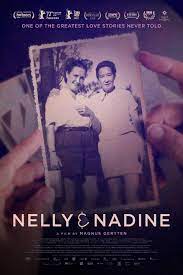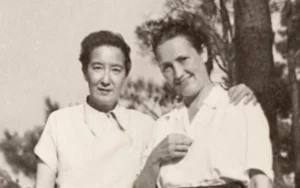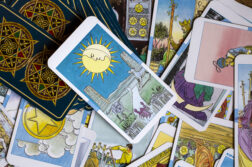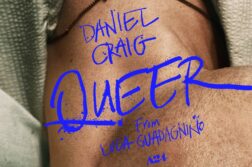 Nelly & Nadine
Nelly & Nadine
Written by Jesper Osmund and Magnus Gertten
Directed by Magnus Gertten
Of the many films unearthed recently depicting the remarkable, courageous women from the second World War, none is more astonishing than the story of Nadine and Nellie, discovered by French lesbian/feminist Suzette Robishon during her research into the Shoah. It is a true lesbian love story.
I first learned of Nadine Hwang while researching my biography of Romaine Brooks. Other than an intriguing mention of Nadine in Joan Shankar’s biography of Dolly Wilde, I knew nothing more about her. At the turn of the century, Paris was a hotbed of lesbian desire, and Natalie Barney was its Sappho. But there is neither mention of French mezzo-soprano Nellie Mousser-Vos relating to Nadine, nor the circles of Natalie Barney, Romaine Brooks, or Winneretta Singer, the Princesse de Polignac.
Born in 1902 in Madrid, Spain, Nadine Hwang was the daughter of a Chinese diplomat and a Belgian mother. Her father was the Chinese ambassador to Spain. With the collapse of the Chinese empire in 1911, China reconstituted itself as an independent Republic. Her father moved the family back to China in 1913, where Nadine enrolled in a French Catholic school and studied French in Beijing. She trained to be a lawyer and worked as the secretary to Prime Minister Pan Fu. Nadine learned how to fly an airplane, and was among the upper class in China. She moved to Paris in 1933, becoming Natalie Barney’s chauffeur and lover. Handsome, dashing, and a take-charge kind of butch, she frequented the Monocle club and was sought after by many women. She was deported to the infamous concentration camp, Ravensbrück, for spying on the Nazis. This German concentration camp established in 1939 in northern Germany (about 90 km north of Berlin), was exclusively for women.
Danish filmmaker Magnus Gertten’s documentary Nelly & Nadine tells the incredible story of two women who fell in love in Ravensbrück on Christmas Eve, 1944. It is based on the diaries, letters, photographs, and home movies found in a forgotten chest by Nelly’s granddaughter Sylvie Bianchi in her attic. Compelled to dig deeper, Gertten discovered a series of old, fading, falling apart documents and almost indecipherable photographs. The hidden hoard inspired him to find a way to show the secret herstory of two extraordinary, resilient lesbian lives.
Astonishingly, Gertten identified Nadine in some newsreel footage of refugees arriving in Sweden in 1945, after the liberation of the camps. Nadine appears solitary and changed amongst a multitude of joyful faces. A Chinese national, she is listed as a spinster on her application to Switzerland.
Nelly, who was not Jewish, began working as a spy with the French resistance network in 1940. She was arrested in Paris in 1943, and shipped off to Germany. After spending five days in a cattle car packed so tightly with other people that she could not move, she arrived at the “antechamber to hell,” Ravensbrück. Miraculously, it was here that she met the love of her life.

Nadine was charismatic like Vita Sackville-West, handsome, exciting, sexual, with a take-charge personality. Nelly, by contrast, was a soft, blonde, feminine French opera singer whose unaffected smile, outgoing personality, and dulcet voice enchanted Nadine.
On Christmas Eve 1944, Nelly was ordered to sing Christmas carols. Suddenly a voice called, “Sing something from Madame Butterfly!” Nelly chose Puccini’s “Un bel di,” one of the opera’s most beautiful expressions of longing and hope. Surrounded by unimaginable horrors in a desolate environment, love blossomed from the ashes. Nelly wrote, “Emotion overflows my skin…delirious joy.” Still, she never spoke of her experiences after the war to her granddaughters, so they knew nothing of their beloved grandmother’s heroism or passion; Sylvie’s mother did not approve of Nelly and Nadine’s relationship, and kept it hidden from her daughters.
Gertten sensitively frames the film through Sylvie’s eyes as we follow her slowly, putting the puzzle pieces of her grandmother’s life into perspective. These star-crossed lovers initially did not know what had happened to each other after the war. As fate would have it, the two were eventually reunited in 1947 and moved to Caracas, Venezuela, where they posed as cousins and forged a new life throughout the ’50s and ’60s. Their home movie gives us wonderful glimpses into mid-century gay life in South America. We see the couple in their apartment–Nadine, impeccably tailored, smoking, drinking, and Nelly playing hostess–surrounded by laughing young, gay male friends. Rarely seen in real life, their fairy tale ending makes the film all the more moving and essential for GLBTQ+ viewers and lesbian feminists, given how lesbians have generally been depicted heteronormatively. This is definitely a film that should be on everybody’s must see list.
Cassandra Langer graduated from NYU with a doctorate in critical studies and art history, is a Smithsonian postdoctoral fellow, author of 10 books and taught at FIU, USC, Hunter and Queens College. She has written for Arts, College Art Journal, Art Papers, Woman’s Art Journal, Ms. Magazine, Women’s Review of Books, New York Newsday and The Gay and Lesbian Review Worldwide. Her most recent book is Erase Her: A Survivors Story, about her two-and-a-half-year conversion therapy ordeal; you can purchase it here.







Discussion1 Comment
Beautiful.